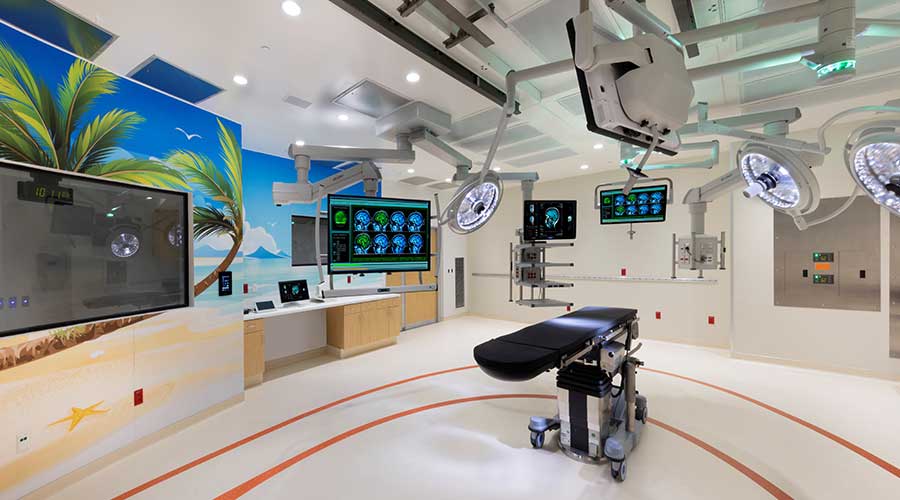Suffocation-related suicide caused by hanging, asphyxiation, strangulation and other means was the second leading cause of self-inflicted deaths, according to a study by the U.S. Centers for Disease Control and Prevention (CDC) measuring suicide mortality in the United States from 2000–2020. And the trend increased significantly from 2000 to 2018.
In hospitals, it is a sobering statistic that patient suicide and self-harm both rank among The Joint Commission’s top 10 sentinel events, defined as events that result in death, permanent harm or severe temporary harm. So it follows that suicide-prevention efforts in hospitals should primarily focus on reducing the environmental risks and opportunities for self-harm.
The Joint Commission estimates 49–65 inpatient suicides occur each year in the United States, and its studies suggest suicide and self-harm attempts in healthcare facilities are often impulsive. Healthcare facility managers must prioritize driving down the opportunities for death by hanging to reduce the risks of suicides and self-harm in hospitals.
Ligature risks and strategies
Ligature points are places where a cord, rope, bedsheet or other fabric or material can be looped or tied to create a sustainable point of attachment that might result in self-harm or loss of life. Given the above statistics, in 2017 surveyors began placing a special focus on suicide, self-harm and ligature observations in psychiatric hospitals and units.
Any ligature risk, no matter how small, is an immediate recommendation for improvement when observed in an inpatient psychiatric or designated area, to be corrected within 45 days or less, depending on its severity or the total number of issues identified.
While patient rooms are focal points for ligature-risk mitigation, in behavioral health facilities, ligature assessments extend beyond individual patient rooms to include common areas, grounds and hallways.
Related: Suicide Offers Reminder of Need for Hospital Security
Risk assessments should be conducted in areas of a hospital where a behavioral health patient might receive care. There is no requirement for the type of tool used to complete the risk assessment, but it is critical that a multi-disciplinary team is involved in this process.
For example, facilities teams responsible for the physical environment might not be as familiar with clinical issues that can arise in the environment. A clinician can provide that insight. Including a variety of teams and perspectives in this process ensures that no elements are missed and that risks are mitigated long before a patient might attempt self-harm.
Efficient risk assessments and plans
Without a standard risk assessment tool mandated by deeming organizations such as The Joint Commission and the Centers for Medicare & Medicaid Services (CMS), facilities must develop their own tools. There is more than one way to conduct assessments, so the key is to develop a tool that works best for the individual organization.
In general, tools should prioritize the type and severity of a risk and outline actions required for remediation. At a minimum, The Joint Commission’s expectations for ligature-risk mitigation plans are these:
- Leadership and staff are aware of current environmental risks.
- Patients’ individual risk for suicide or self-harm is identified, followed by appropriate interventions.
- At-risk behavior is assessed on a recurring basis.
- Staff is properly trained to identify patients’ levels of risk and intervene properly.
- Suicide and self-harm mitigation strategies are incorporated into the quality assessment/performance improvement program.
- Policies and procedures are in place, and staff knows the immediate action to take when a patient is deemed at risk of suicide.
- If equipment poses a risk but is necessary for the treatment of psychiatric patients, those risks are considered in the patient’s assessments, and adequate interventions are implemented to minimize those risks.
Continuous training and assessments
As noted, leadership and staff awareness of environmental risks is critical for ligature risk mitigation. Staff at every level in a facility should receive comprehensive training on ligature-risk recognition and response so they are empowered to identify warning signs, intervene effectively and communicate concerns. Multi-disciplinary teams can reinforce training by illustrating the impact different departments can make on patient safety.
Risk assessments and training should never be viewed as one-time tasks. Conducting ongoing risk assessments is important to ensure facilities are compliant with any updates to regulations and that no new risks have surfaced over time. Training should be done regularly, incorporating changes in regulations or to the environment, ensuring new and legacy staff members are prepared and remain vigilant.
Ultimately, by prioritizing patient safety with multi-disciplinary teams, thorough assessments and mitigation plans and continued review and training, healthcare facility managers can create environments conducive to healing and recovery while mitigating ligature-related tragedies.
Scott Cormier is vice president of emergency management and environment of care and safety for Medxcel.

 Authorities Issue Joint Advisory on RansomHub Ransomware
Authorities Issue Joint Advisory on RansomHub Ransomware 9 Steps to a Successful Healthcare Capital Project
9 Steps to a Successful Healthcare Capital Project Steward Health Care to Sell Wadley Regional Medical Center in Texarkana
Steward Health Care to Sell Wadley Regional Medical Center in Texarkana Texas HHSC Breaks Ground on New Terrell State Hospital
Texas HHSC Breaks Ground on New Terrell State Hospital Enhancing Behavioral Healthcare with Thoughtful Design
Enhancing Behavioral Healthcare with Thoughtful Design